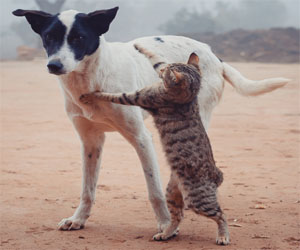


Unraveling The Mysteries In The Fields

Crop circles have intrigued researchers and enthusiasts for decades, prompting extensive investigations in an attempt to unravel their mysteries. While skeptics attribute many formations to hoaxes or natural processes, serious researchers have delved into the intricacies of these enigmatic designs etched into fields of crops. In this article, we explore the world of crop circle investigations and some of the key findings that have emerged from these inquiries.
Scientific Rigor In Crop Circle Investigations
Serious crop circle researchers approach their investigations with a commitment to scientific rigor. They gather evidence, analyze data, and subject their findings to peer review in the pursuit of comprehensive and unbiased explanations. This commitment to the scientific method sets their work apart from more speculative or paranormal-oriented discussions.
Formation Techniques And Precision
One of the most compelling aspects of crop circle investigations is the examination of formation techniques and precision. Researchers have discovered that while some crop circles can be easily attributed to human-made efforts using ropes and boards, others exhibit remarkable precision and intricacy that challenge conventional explanations. These formations often display geometric shapes and mathematical properties that are difficult to achieve through simple means.
Elongated Crop Nodes
An intriguing finding in some crop circle investigations is the discovery of elongated crop nodes. In some formations, the crop plants exhibit elongation of their nodes, or the points where leaves and stems connect. This phenomenon is often associated with crop circles that have not been obviously man-made, leading researchers to investigate the potential mechanisms behind this plant response.
Magnetic Anomalies And Radiation
Researchers have noted magnetic anomalies and increased radiation levels in the vicinity of some crop circles. These findings have fueled speculation about the involvement of external forces or energy sources in the creation of certain formations. While these anomalies are intriguing, their connection to crop circle formation remains a subject of ongoing research and debate.
Crop Circle Communication Theories
Some crop circle investigators have explored the possibility that these formations may serve as a form of communication or symbolism. They propose that the intricate geometric patterns could convey messages, symbols, or codes that have yet to be deciphered. These theories have led to the examination of potential mathematical and geometric symbolism in crop circles.
Cultural And Artistic Impact
Beyond scientific investigations, researchers have also explored the cultural and artistic impact of crop circles. These formations have inspired artwork, literature, and even tourism in regions where they are prevalent. The cultural significance of crop circles as a form of contemporary art and expression is an area of study that complements the scientific inquiries.
Crop circle investigations have yielded a range of findings, from the elucidation of formation techniques to the discovery of unusual plant responses and magnetic anomalies. These investigations demonstrate the commitment of researchers to exploring the enigma of crop circles with scientific rigor and an open-minded approach. While many crop circles are indeed the result of human-made hoaxes or natural processes, the pursuit of understanding these formations continues to be a captivating and challenging endeavor.
A Sustainable Solution For A Greener Future
 Biogas And Anaerobic Digestion
Biogas And Anaerobic Digestion
Another waste-to-heat method involves the conversion of organic waste into biogas through anaerobic digestion. In this process, microorganisms break down organic matter in the absence of oxygen, producing biogas, which is primarily composed of methane. This biogas can be used as a renewable fuel for heating, whether in residential, commercial, or industrial applications.
Municipal Solid Waste-To-Energy
Waste-to-energy facilities that convert municipal solid waste into electricity often capture and utilize the waste heat generated during the process. This waste heat can be channeled into district heating systems, thereby providing a sustainable and efficient way to meet the heating needs of communities.
Environmental And Economic Benefits
Renewable heat from waste offers numerous environmental and economic advantages. Firstly, it reduces the demand for non-renewable heating sources, such as natural gas and oil, which helps lower carbon emissions and combat climate change. Additionally, it contributes to waste diversion, reducing the pressure on landfills and minimizing their environmental impact.
From an economic perspective, utilizing waste materials for heat generation can create jobs in waste collection, transportation, and processing, as well as in the design and maintenance of heating systems. This not only bolsters local economies but also provides an opportunity for sustainable development.
Challenges And Considerations
While renewable heat from waste holds tremendous promise, it is not without its challenges. Factors such as waste composition, technology efficiency, and regulatory standards all play a crucial role in the successful implementation of these systems. Ensuring that waste materials are properly sorted and processed is essential for efficient and environmentally responsible heat production.






Top Tips For Success
 2. Consistency Is Key: Consistency in training is vital. Use the same cues, commands, and techniques throughout your training sessions. Dogs respond well to predictability and repetition, so keeping things consistent helps them understand what is expected of them.
2. Consistency Is Key: Consistency in training is vital. Use the same cues, commands, and techniques throughout your training sessions. Dogs respond well to predictability and repetition, so keeping things consistent helps them understand what is expected of them.
3. Positive Reinforcement: Use positive reinforcement methods like treats, praise, and play to motivate and reward your dog during training. Dogs are more likely to learn and retain commands when they associate them with positive experiences.
4. Know The Rules: Familiarize yourself with the rules and regulations of the competition you're entering. Each event has specific guidelines and expectations, and understanding them is essential to ensure your dog's success.
5. Find A Qualified Trainer: Consider seeking the assistance of a professional dog trainer who specializes in the specific competition you're interested in. They can provide expert guidance and help you and your dog refine your skills.
6. Gradual Exposure: Gradually expose your dog to the competition environment. Start by practicing in familiar settings, then gradually introduce new elements, such as different locations, distractions, and other dogs. This helps your dog adapt to the competition environment.
A Skeptical Perspective
 Skeptics also emphasize the lack of empirical evidence for Nostradamus' supposed prophetic abilities. They argue that belief in his predictions is largely rooted in confirmation bias, where believers selectively focus on the handful of quatrains that appear to match historical events while ignoring the majority that do not. The scientific method and the principles of critical thinking, which demand empirical evidence and verifiable predictions, are often conspicuously absent from the believers' claims.
Skeptics also emphasize the lack of empirical evidence for Nostradamus' supposed prophetic abilities. They argue that belief in his predictions is largely rooted in confirmation bias, where believers selectively focus on the handful of quatrains that appear to match historical events while ignoring the majority that do not. The scientific method and the principles of critical thinking, which demand empirical evidence and verifiable predictions, are often conspicuously absent from the believers' claims.
Moreover, critics highlight the historical context in which Nostradamus lived. His era was marked by political, religious, and social turmoil, and his quatrains can be viewed as a reflection of the uncertainties and anxieties of his time. Skeptics argue that his writings may have been more about capturing the spirit of the era than providing specific glimpses of the future. They maintain that the events he purportedly predicted can often be seen as general reflections of the historical climate of his time.
Another common target for debunking is the selective use of Nostradamus' quatrains by believers. Skeptics assert that proponents of Nostradamus often cherry-pick the quatrains that seem to match historical events while ignoring those that do not.
Ensuring A Happy And Healthy Feline Friend
 3. Vaccinations And Preventive Care
3. Vaccinations And Preventive Care
Vaccinations and preventive care are vital to maintaining cat wellness. Keep your cat up to date with vaccinations, and discuss preventive measures such as flea and tick control, heartworm prevention, and dental care with your veterinarian.
4. Dental Health
Oral health is often overlooked but is critical for cat wellness. Dental problems can lead to various health issues. Regular dental care, including brushing your cat's teeth and providing dental treats or toys, can help keep their teeth and gums in good condition.
5. Grooming And Hygiene
Grooming is not just about keeping your cat looking their best; it's essential for their wellness. Regular brushing helps reduce shedding, prevents matting, and strengthens your bond with your cat. Some long-haired breeds may require more frequent grooming.
 Positive Reinforcement
Positive Reinforcement
Positive reinforcement is a cornerstone of effective dog training. This technique involves rewarding your dog with treats, praise, or affection when they exhibit the desired behavior. By associating good behavior with positive outcomes, your dog is more likely to repeat those actions. Consistency in providing rewards and timely reinforcement is key to success.
Clicker Training
Clicker training is a precise and efficient method that pairs a distinct sound (the click) with a reward. Dogs quickly learn to associate the click with good behavior and become more responsive to training cues. Clicker training allows for clear communication and is especially useful for teaching complex tricks and commands.
Obedience Training
Obedience training is a structured approach to teaching your dog essential commands like sit, stay, and come. This technique establishes a foundation for good behavior and ensures your dog's safety in various situations. It is essential to practice obedience commands regularly to reinforce your dog's understanding.
Consistency
Consistency is a vital element in dog training. Use the same commands and cues consistently, so your dog can easily understand what you expect from them. Everyone in your household should be on the same page regarding training techniques and reinforcement to avoid confusing your dog.
Socialization
Socialization is critical for puppies and older dogs alike. Exposing your dog to different people, animals, and environments helps them develop into well-adjusted pets. Socialization can reduce fear and aggression while improving overall behavior and adaptability.